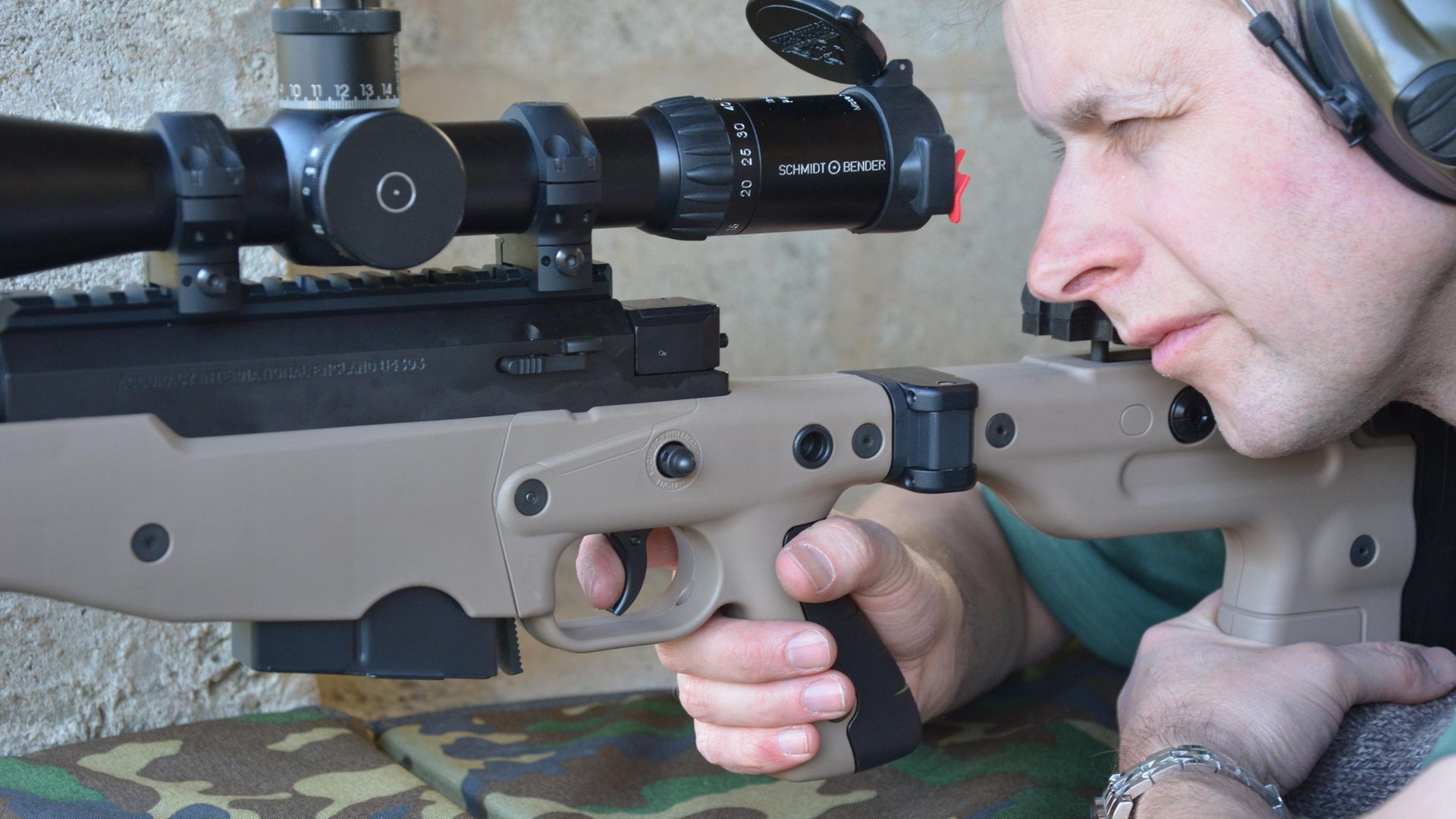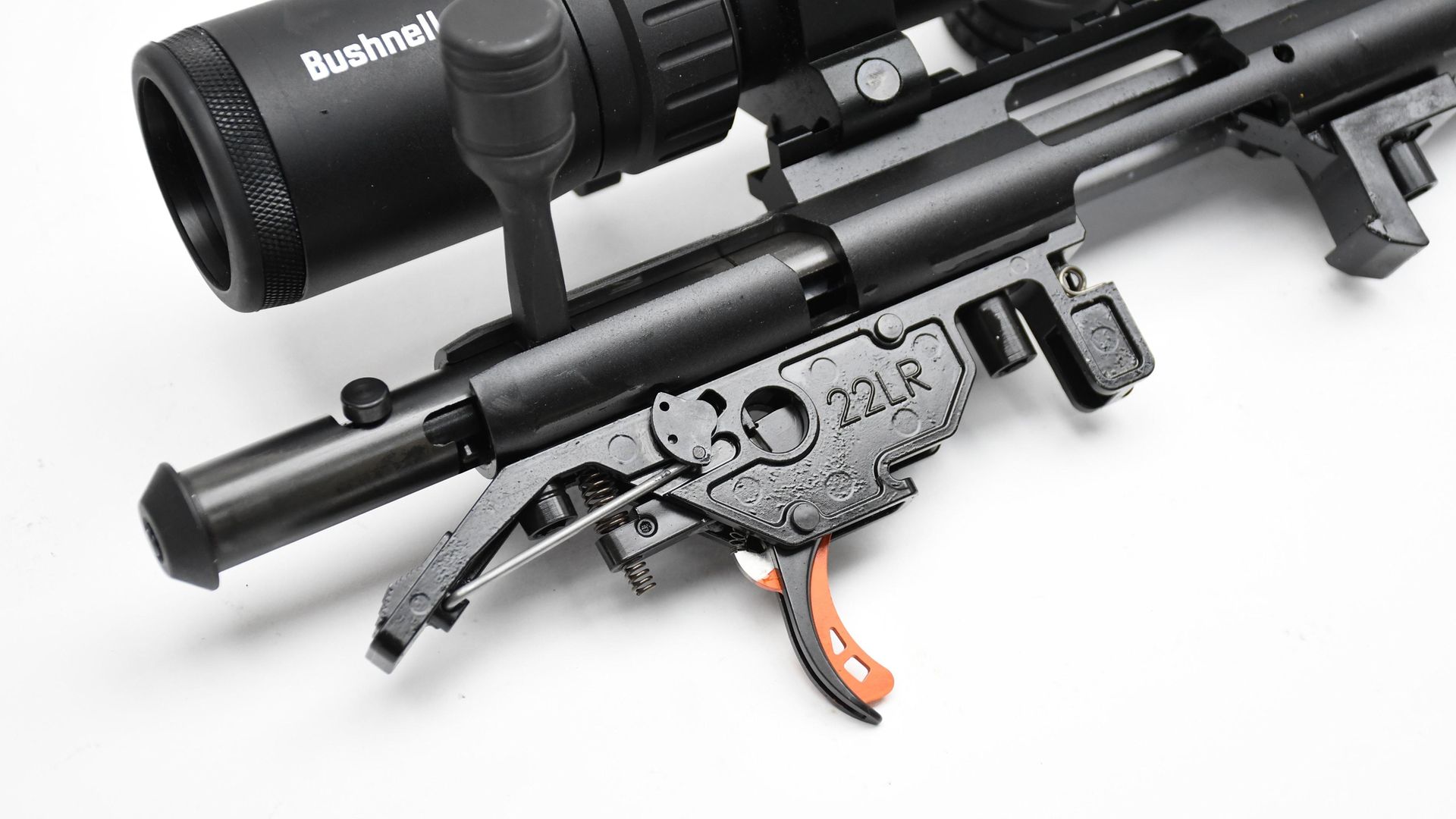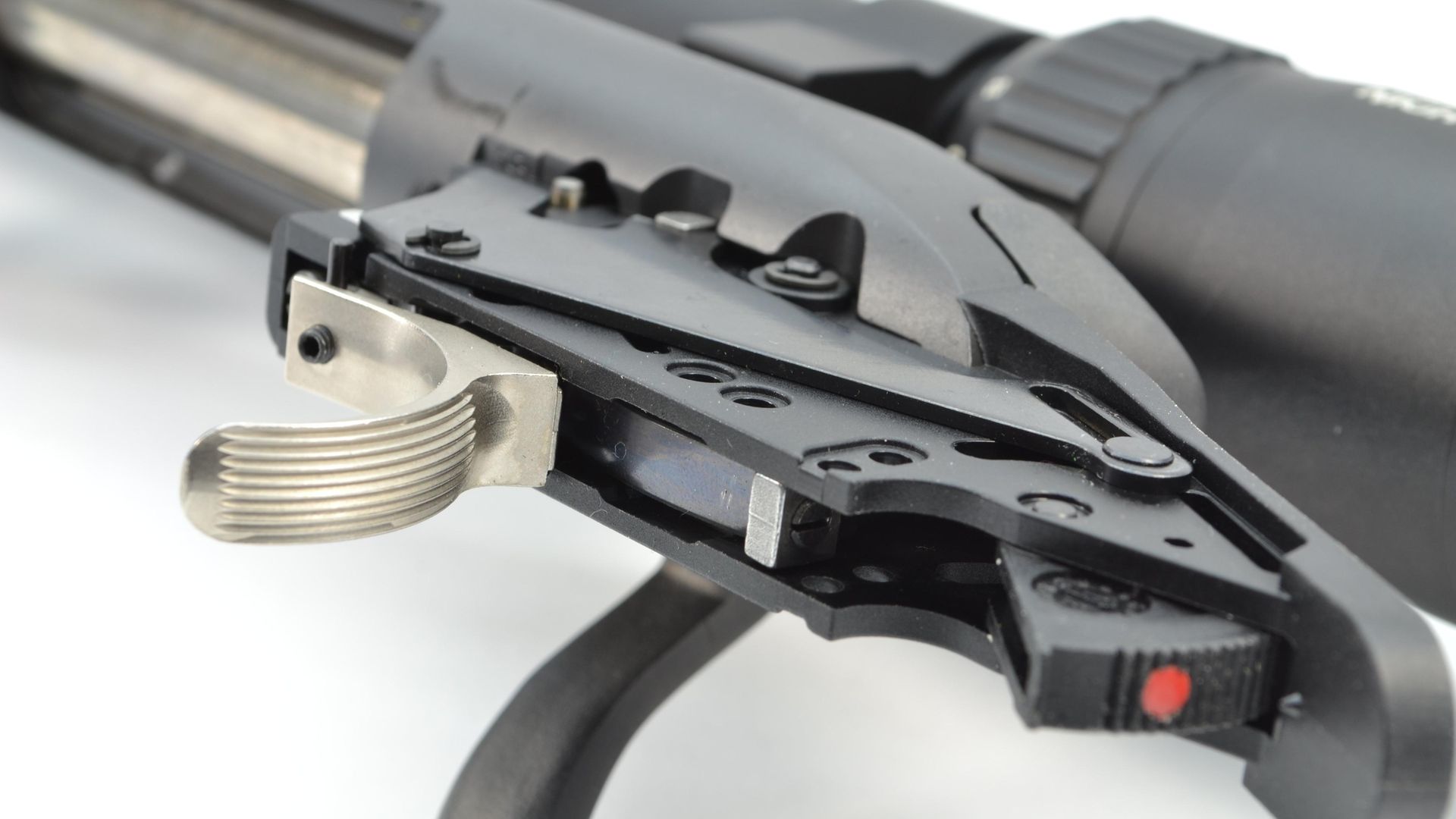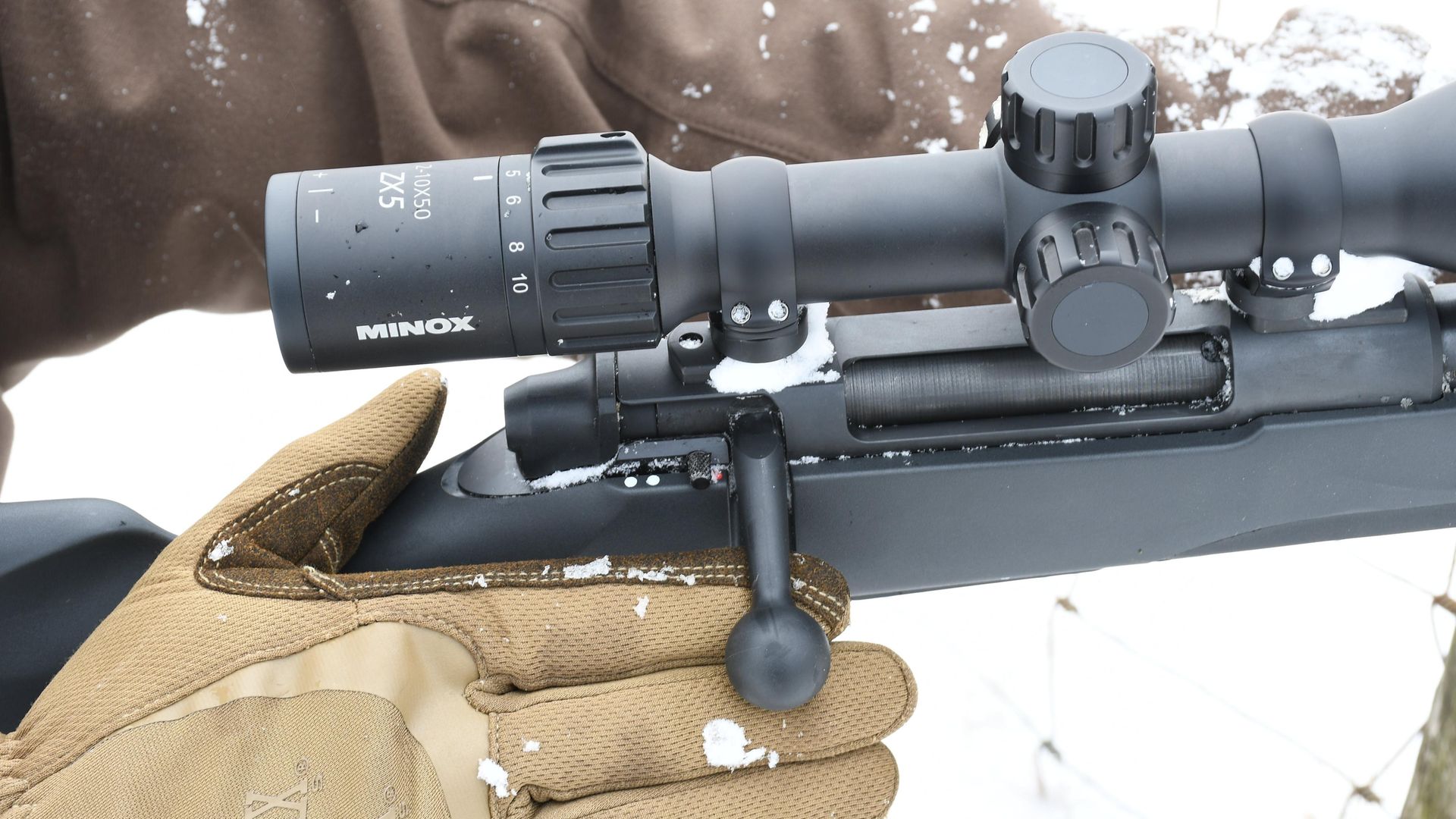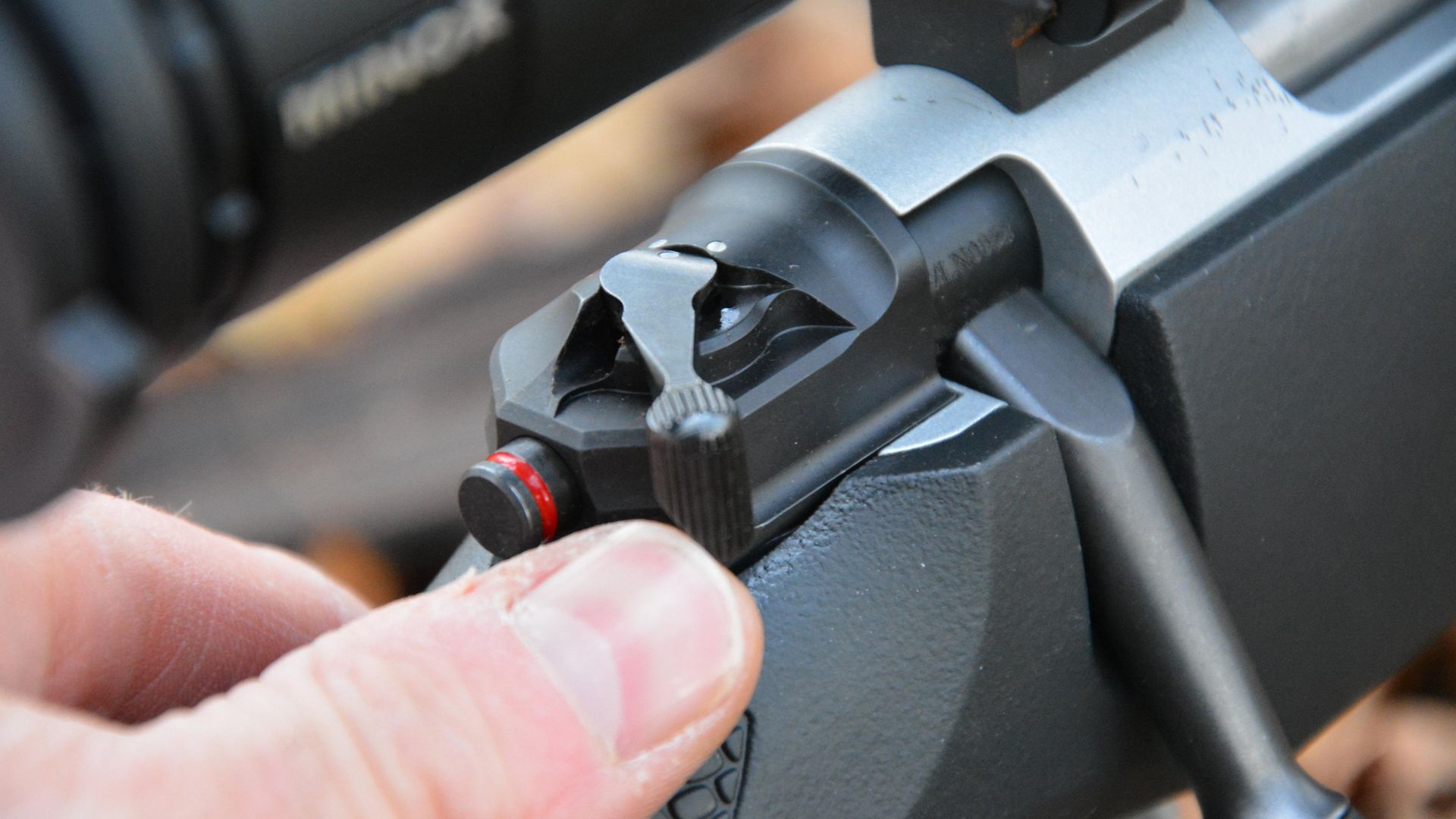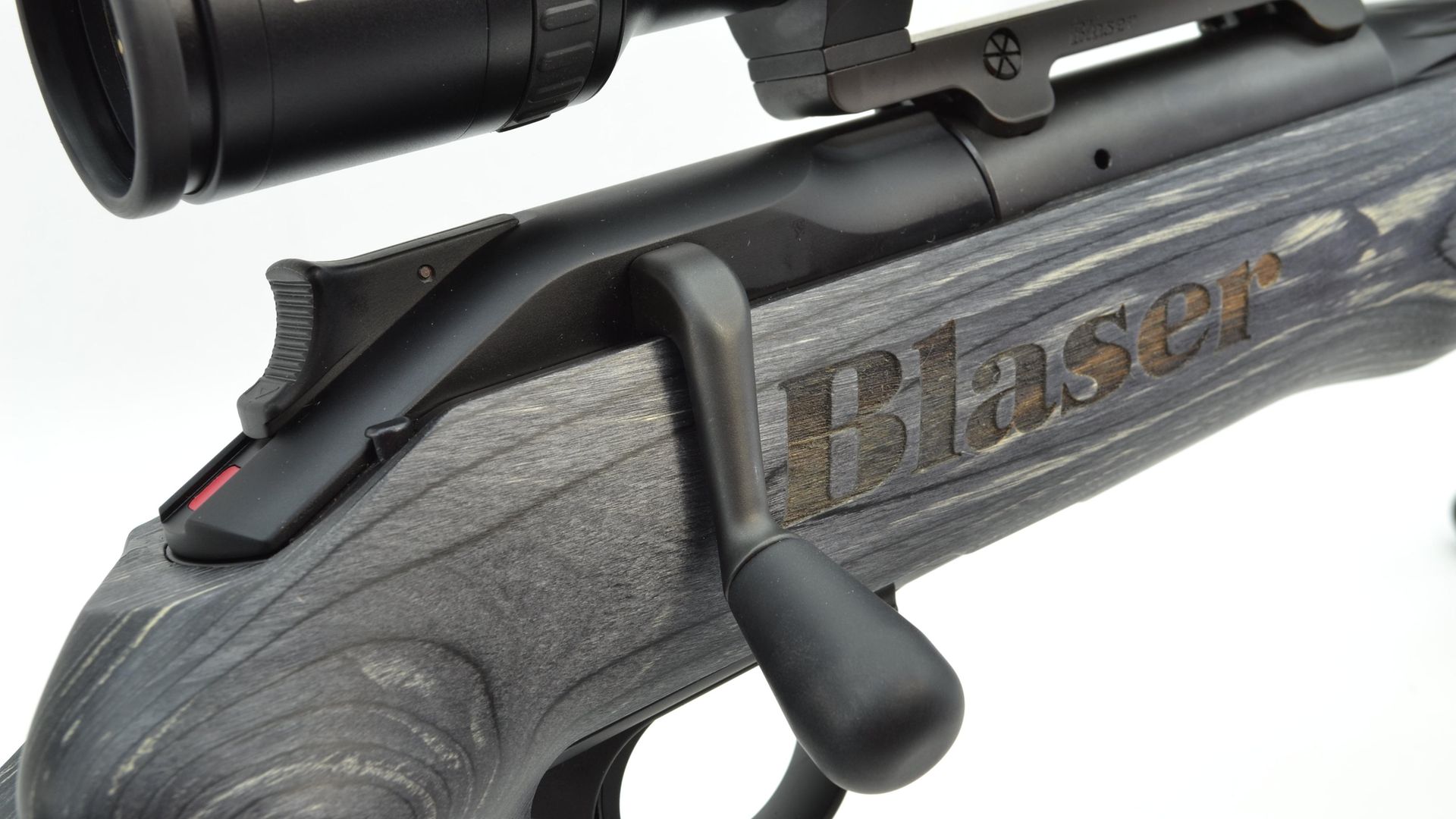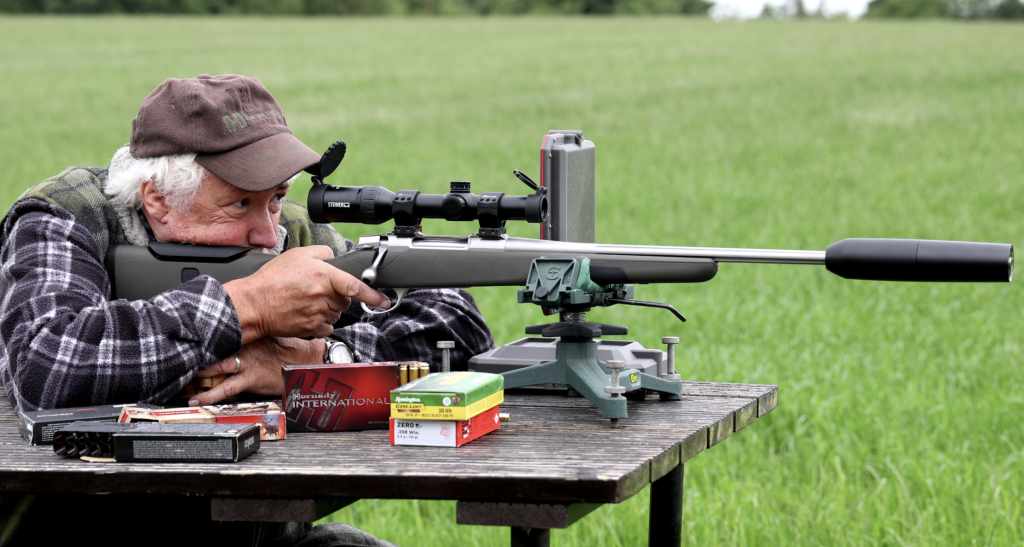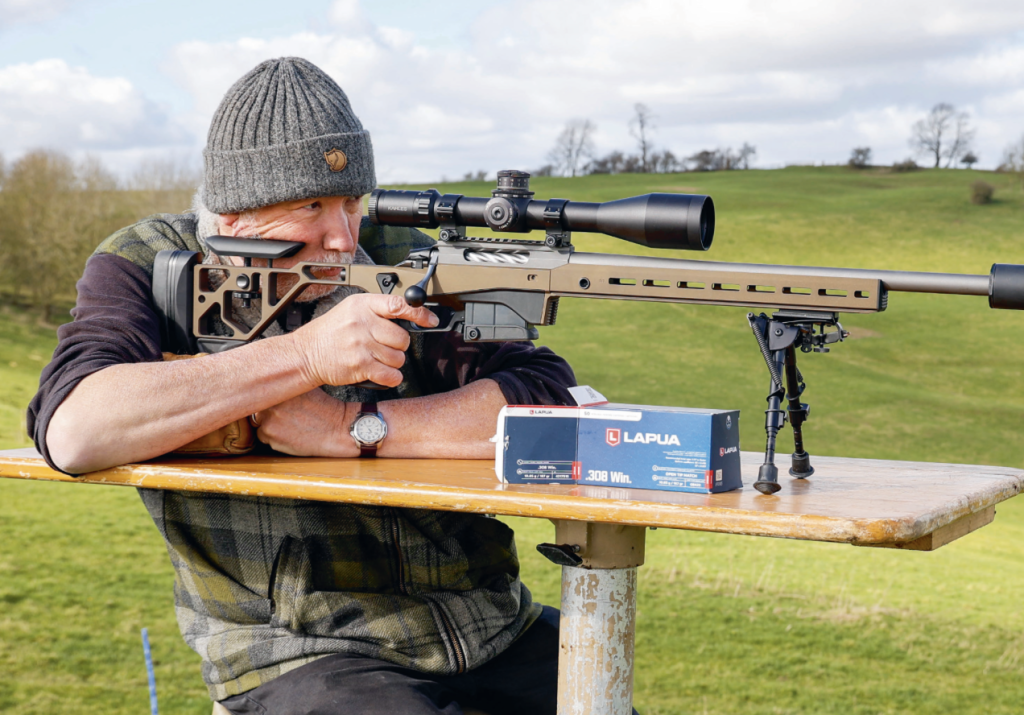Triggers and safety catches explained
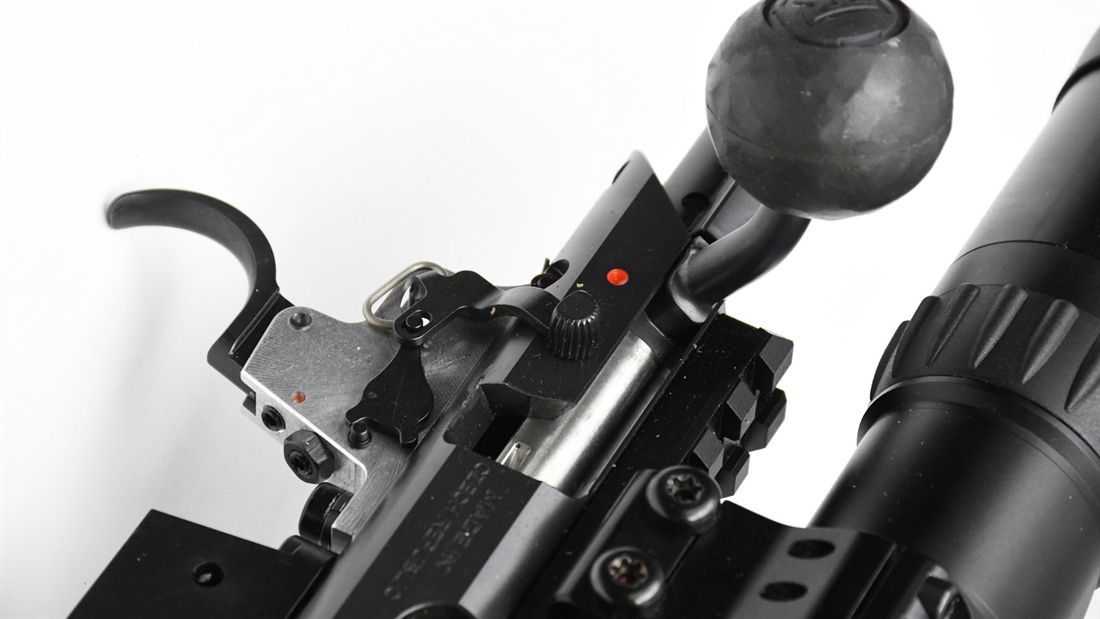
Chris Parkin explores and explains all the available options when it comes to trigger design and safety catches on rifles, to help you make a good purchase
Rifle triggers
Single-stage triggers are the units most commonly found on rimfire and centrefire rifles and perhaps the simplest to understand. Essentially, once your finger is placed on the blade and you begin to add pressure, the trigger should ‘break’ cleanly, snapping almost like a piece of glass without any sensation of movement as soon as the prescribed pressure is reached (1). This can be weighed in ounces or grams and may be adjustable or fixed entirely.
Weight adjustment will alter the peak force required for the break and the secondary adjustment is for what is known as sear engagement. These are the two steel levers facing each other and as one is minutely displaced by the trigger, the other can fall past it, allowing the preset tension exerted by firing pin spring to fire. You will often hear the term ‘creep’, which is the feeling of those two surfaces moving across one another and, generally, the less engagement there is, the crisper the trigger will feel. Yet this is at odds with safety and security, especially with weak tolerances or poor, badly finished materials within mechanisms.
The term ‘hair trigger’ can literally refer to the fact that essentially your firing pin is withheld, under spring tension, from hitting the primer by a hair’s width engagement of those two steel sear surfaces.
Two-stage triggers introduce an initial amount of free movement of lighter weight than the breaking force and as pressure is gently applied, you feel the blade stop as it reaches the second stage, which requires more pressure to be added for the trigger to finally break.
These are sometimes found on target rifles and precision rifles (2) to enable a more defined perception of a light trigger and sometimes more sear engagement for security. Adjustability often applies to the weight of either stage, the length of travel between stages, and on some triggers, a further adjustment called ‘overtravel’. This is the amount the trigger blade will move after it breaks – sometimes just a millimetre, occasionally further.
Some users like to refine triggers to their preference; I tend to accept them as supplied from the factory, as it’s how buyers will receive them. Trigger adjustment can be a bit of an art and possible to get very wrong. If you are unsure, seek professional advice. Many guns will have their warranty voided if the trigger is tampered with.
Guns often arrive with massive amounts of threadlock applied to discourage users from adjusting things. Personally I find it a bit insulting and a sticking plaster for a cheaper mechanism. Two-stage triggers are commonly found on airguns. Older spring piston air rifles had a lot of force in that pre-loaded piston for the trigger to restrain – much more than just a firing pin.
Savage rifles have a specific mechanism that involves an inner trigger blade within the main blade. This must be fully depressed, with similar feel to a two-stage trigger’s first stage before the second stage can be fired. Although they feel similar, they work differently and in fact if you accidentally press the trigger blade without the inner blade first, the mechanics automatically de-cock (with a ‘dead-man’s click’) for safety and you have to re-cock the mechanism via the bolt to start again (3).
Single-set triggers are pressed forwards prior to firing. They click into their set position and when squeezed backwards as normal offer a far lighter pull weight than the standard setting (4). A double-set trigger offers normal performance from the rearmost blade with a second blade in front used to set the lighter pull mode, similar to the single-set unit.
These mechanisms are regularly seen as a bit old fashioned now and often combine an onerously heavy normal mode with a frighteningly light set option. I generally don’t worry about them as they are usually complicated to adjust and I get used to the normal mode, which is often heavier than desired but usually delivers a crisp break. Extremely light triggers often disguise problems or the shooter flinching a bit, but they are not a magic solution. Set triggers are different from overall weight adjustment in that they can be used at will if the situation dictates without any tools or disassembly required.
Rifle safety catches
Safety catches can generally be drawn into three styles on a rifle. A trigger safety locks the trigger mechanism and won’t allow the trigger blade/sear to disengage the firing pin sear. This works in general, although bear in mind those two sears, which are usually only engaged by fractions of a millimetre as described previously, are still subject to dust and debris ingress as well as wear and tear through long use, so this type of safety catch is only really as good as the trigger setup itself (5). The switch is usually set to the side of the action but sometimes through the trigger, in the tang or with a lateral lever, and may offer a full bolt handle lock function.
A firing pin safety locks the firing pin itself, preventing any forward motion and often has a lever on the bolt itself (6). These may seem old fashioned but are mechanical very strong and mentally reassuring. A de-cocker is seen less frequently (7) as it’s more expensive, with additional mechanical complexity, but it locks everything and also de-cocks the firing mechanism by means of relieving all spring tension, therefore making the gun inert without any potential spring energy to initiate firing pin motion towards the primer.
No system is inherently bad or good and this is just a simple overview of the main styles, each of which is subject to many variations from different makers, especially with respect to the tactile interaction, levers, sliders, rollers, switches, etc. All affect application speed, noise and secondary functions like bolt release or mechanism disassembly, and I try to cover these in every review.
Related Articles
Get the latest news delivered direct to your door
Subscribe to Rifle Shooter
Elevate your shooting experience with a subscription to Rifle Shooter magazine, the UK’s premier publication for dedicated rifle enthusiasts.
Whether you’re a seasoned shot or new to the sport, Rifle Shooter delivers expert insights, in-depth gear reviews and invaluable techniques to enhance your skills. Each bi-monthly issue brings you the latest in deer stalking, foxing, long-range shooting, and international hunting adventures, all crafted by leading experts from Britain and around the world.
By subscribing, you’ll not only save on the retail price but also gain exclusive access to £2 million Public Liability Insurance, covering recreational and professional use of shotguns, rifles, and airguns.
Don’t miss out on the opportunity to join a community of passionate shooters and stay at the forefront of rifle technology and technique.



